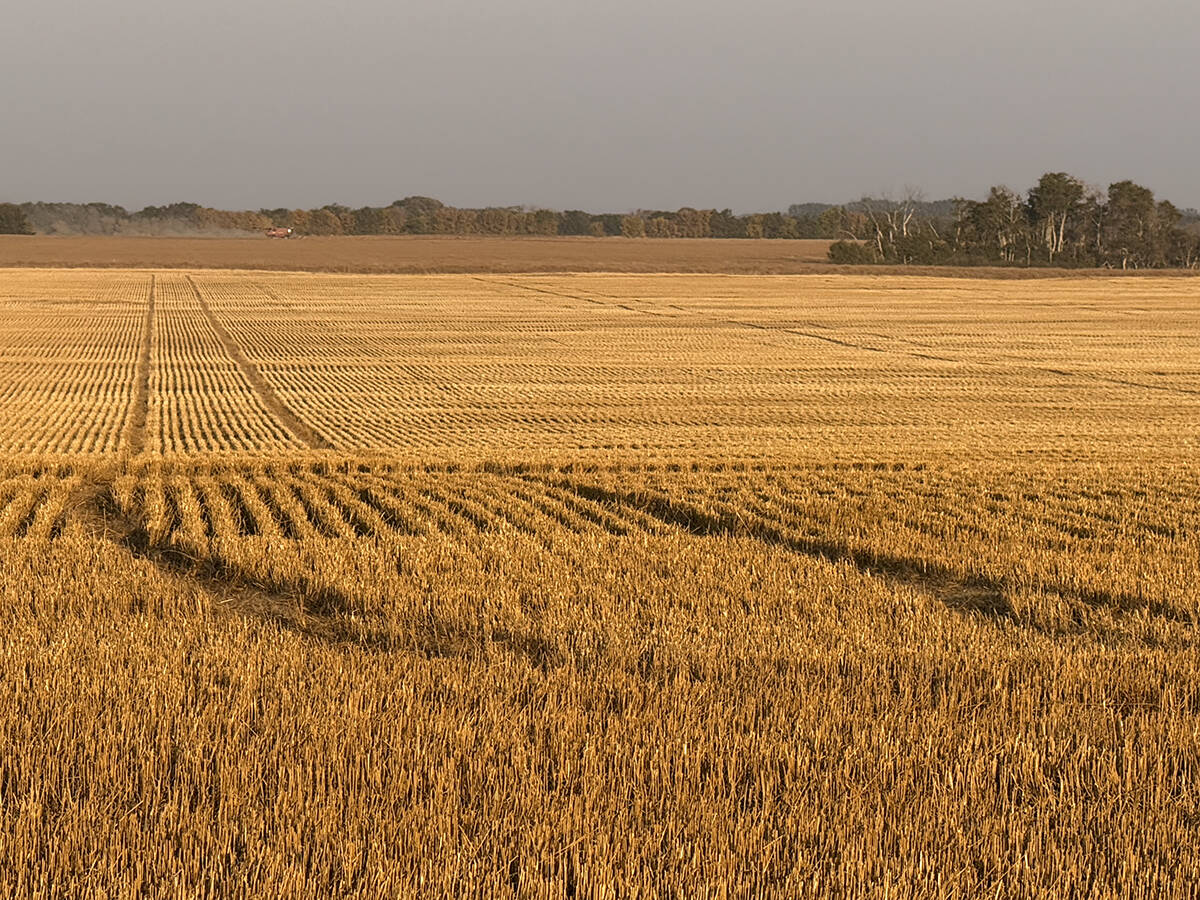DUGALD, Man. – Rick Vaags knows what a Canadian family is getting when its members slice into a juicy ham produced by one of his hogs.
“We eat our own meat all the time,” said Vaags, who runs a 1,200 sow “farrow-to-50” sow operation east of Winnipeg.
While he ships most of his pigs to the United States when they reach 50 pounds, he keeps some until they are market ready and has
them processed in Manitoba.
And he always keeps a few for his freezer.
Read Also

Final crop reports show strong yields, quality
Crops yielded above average across the Prairies this year, and quality is generally average to above-average.
“We get it custom killed and cut,” said Vaags, the son of hog industry leader Bill Vaags. “We get our own pork sausage, pork chops, ham steaks.”
The hog operation is much bigger than the original 50-foot feeder barn Bill established in 1965-66 to replace a burned-down dairy barn. Little about today’s industry is the same.
Far from being a common family pursuit, as it was a few decades ago, hog farming is now a minority pursuit among the general population and also among Manitoba farmers.
It has become a controversial industry, a fact highlighted by the recent firestorm about the proposed OlyWest plant on a site just a few miles west of this farm.
Vaags farms about one kilometre from the town of Dugald, and has to spread his farm’s manure on land close to the community. But he has few problems with neighbours and town residents, which he attributes to his attempts to take their odour and water concerns seriously.
“We drink the water that comes from right near our barns, so we care about it too,” said Vaags.
The family originated in the Netherlands, with Bill arriving when he was 14 years old. At first they worked for another farm, helping produce sugar beets, but then Bill rented
farmland and eased into dairy production.
The family’s foray into hog farming has taken it on path of continuing intensification and increasing complexity, in an industry that has rapidly industrialized.
A pig may still produce the same cuts of meat, but a ham today is a far cry from the ham of yesteryear. The meat now is designed
to be exactly what both the farmer and the consumer want.
“We buy all our genetics from a breeding company,” said Vaags. “They really focus on what everybody wants. What does the farmer want? What does the meat buyer want? What does the retailer want?”
Vaags has no trouble imagining who sat down at Christmas, at Easter or at any supper to eat one of his scrumptious hams. A host of images spring to mind.
“It’s everybody,” said Vaags. “It’s your average consumer. It’s not just the upper class or the lower class. It’s for everybody.”
Ham Steaks Canadienne
Ham Steaks Canadienne
2 (1/2 inch/1 cm) HAM STEAKS
(about 2 lb./1 kg)
12 WHOLE CLOVES
3/4 cup (175 mL) BROWN SUGAR
2 tbsp. (30 mL) FLOUR
2 tsp. (10 mL) DRY MUSTARD
3 tbsp. (45 mL) VINEGAR
1/2 cup (125 mL) APPLE JUICE
3 CORED, PEELED APPLES
TART RED JELLY
To spice up a regular baked ham, shown above, try this recipe.
Press cloves into fat side of each steak. Score fat into diamond shapes between cloves. Mix dry ingredients;
blend in vinegar and apple juice.
Cut six apple rings 1/4 inch (0.5 cm) thick to garnish top; slice remaining apples thinly. Place one steak in greased baking dish, cover with sliced apples and pour 1/4 cup (60 mL) apple juice mixture over them. Place second steak over apples and garnish with apple rings.
Cover and bake 30 minutes at 325 F (160 C). Remove cover and pour remaining apple juice mixture over steaks. Continue baking uncovered about 30 minutes, basting occasionally. Place one tsp. (5 mL) of tart red jelly in center of each apple ring before serving. Serves six.
Source: Women of Unifarm Cookbook, 1971.















